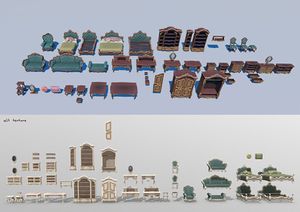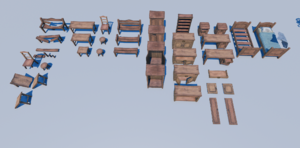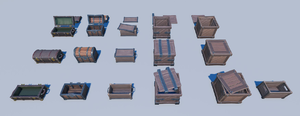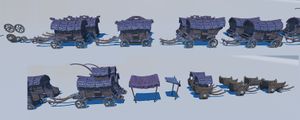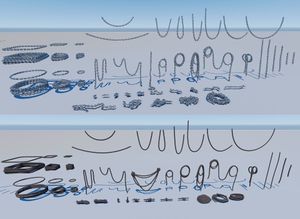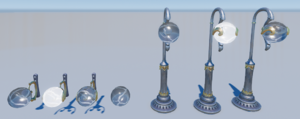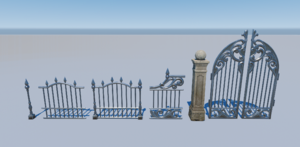3D Asset Workflow: Asset Assembling: Difference between revisions
Jump to navigation
Jump to search
Created page with "= Summary = Check also 3D Asset Workflow: Blocksets and 3D Asset Workflow: Tile Textures and Trimsheets * After the 3D asset set pieces are retopoed, UV mapped, and t..." |
|||
| Line 42: | Line 42: | ||
</div> | </div> | ||
</div> | </div> | ||
Revision as of 14:25, 28 July 2023
Summary
Check also 3D Asset Workflow: Blocksets and 3D Asset Workflow: Tile Textures and Trimsheets
- After the 3D asset set pieces are retopoed, UV mapped, and textured, it's time to assembly to set
- Asset assembling step is used for asset sets which consists of multiple parts, some of which duplicated and mirrored to save texture space
- E.g. when making a chair model, you can only make one chair leg, and duplicate + mirror it to create a chair with for legs - all of which use the the same UVs
- This is the reason assembling needs to be done after UV mapping
- If your model only consists of one mesh with no mirrored/duplicated pieces, you can skip this step and move straight to 3D Asset Workflow: Naming the Asset
- E.g. when making a chair model, you can only make one chair leg, and duplicate + mirror it to create a chair with for legs - all of which use the the same UVs
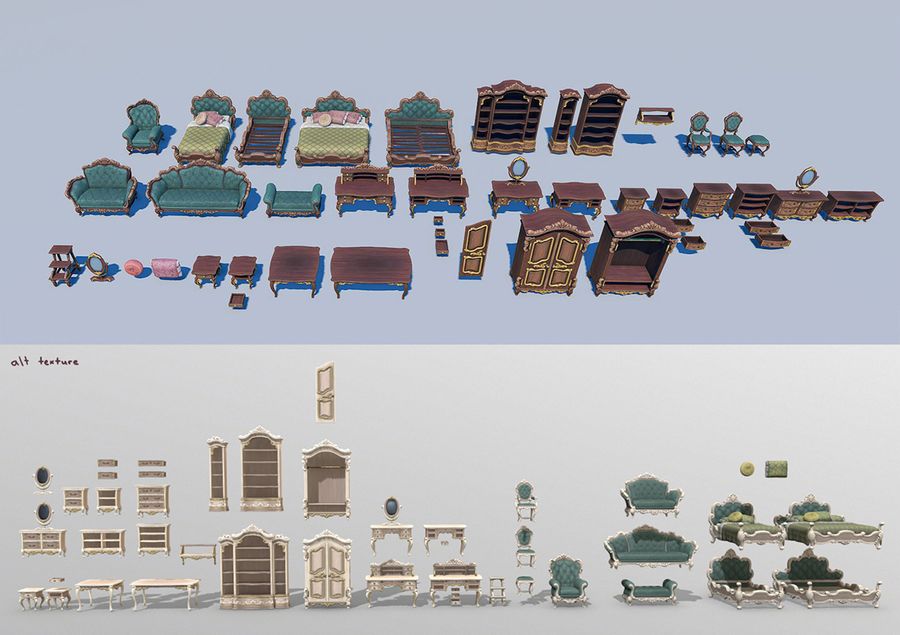
Asset Assembling Workflow Steps
- Make sure you have all the pieces needed to create all the assets that are required
- Make new mesh layers as required, and assembly the new meshes to the new layers
- Use the pieces wisely - most of the time, they don't need to be actually attached to each other, if they just look like they are
- However, don't leave any holes, and delete geometry that's left inside the model
- Use the pieces wisely - most of the time, they don't need to be actually attached to each other, if they just look like they are
- "Vessanpönttöily" and "juhlamokkailu" are also parts of the asset assembly workstep
- Make sure the assets have nice and natural unevenness and asymmetry in them, so that they fit the Trine style better
- It's better to add the wonkiness at this step rather than when sculpting, as it's easier to retopo symmetrical assets
- If your making blocksets, check 3D Asset Workflow: Blocksets - they need to match to each other more mathematically at times, so asymmetry can't be too radical
- Make sure the assets have nice and natural unevenness and asymmetry in them, so that they fit the Trine style better
- If needed, create new mesh layers for the same meshes different variations
- Three is usually a good amount of variations for the same mesh
- Note that the variations should look different enough from each other to make an actual difference
- Add separate parts (e.g. door frames, doors) to their own layers
- Make sure the pivots are in a sensible place - e.g. on the hinges of doors
- This makes them more usable to the level artists
- Make sure the pivots are in a sensible place - e.g. on the hinges of doors
- If needed, make billboards and/or very lowpoly background versions of the assets at this point
- When done, move onto 3D Asset Workflow: Naming the Asset
Asset Assembly Example Gallery
Asset Assembly Example Gallery
-
Also with an alternative texture
-
Also with a tintmask
